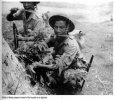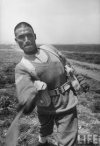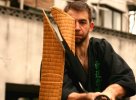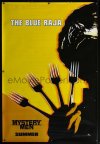After using my ASTK, CAK, and 20" Siru I've made a few observations.
1. Suprisingly, though the Siru is the more elegant blade, it is very front heavy
2. In order of "balance" weight-wise, I would rank them in order of most balanced, to least balanced as ASTK, CAK, 20" Siru
3. To my suprise then the "choppers" were more balanced than the "fighting knife"
Now, my ASTK is a villager model and will be my new camping/hunting/hiking knife. It will see the most use, and to me is more of a tool than a weapon (though I'm sure it would be more than formidable) and my Siru is what I keep handy at night in case of unwanted guests. I find the 20" length to be almost short swordish, and I sure would not want to be on the other end of it. However, I think the balance could be improved by ordering one with a Chiruwa style tang/handle and am contemplating ordering 18,20,25 inch sirus all Chiruwa style in an efffort to find what would suit me best as more of a "defensive" Khukuri. I was even thinking the 25 inch would probably be served well with some sort of guard/hilt also because I could really see your hand coming lose if you struck something really hard and it stopped the blade. What do you fine folks think of my idea? Am I way off here?
1. Suprisingly, though the Siru is the more elegant blade, it is very front heavy
2. In order of "balance" weight-wise, I would rank them in order of most balanced, to least balanced as ASTK, CAK, 20" Siru
3. To my suprise then the "choppers" were more balanced than the "fighting knife"
Now, my ASTK is a villager model and will be my new camping/hunting/hiking knife. It will see the most use, and to me is more of a tool than a weapon (though I'm sure it would be more than formidable) and my Siru is what I keep handy at night in case of unwanted guests. I find the 20" length to be almost short swordish, and I sure would not want to be on the other end of it. However, I think the balance could be improved by ordering one with a Chiruwa style tang/handle and am contemplating ordering 18,20,25 inch sirus all Chiruwa style in an efffort to find what would suit me best as more of a "defensive" Khukuri. I was even thinking the 25 inch would probably be served well with some sort of guard/hilt also because I could really see your hand coming lose if you struck something really hard and it stopped the blade. What do you fine folks think of my idea? Am I way off here?





